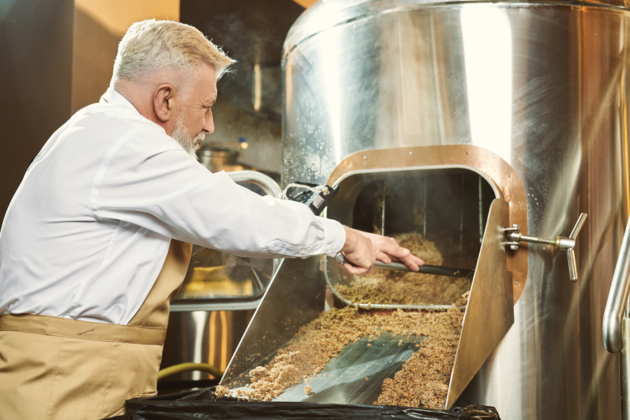
Focus on Food Safety: Effective QA tactics are key to reducing waste
By Dr. Amy Proulx
Food Safety Editor pick food waste A growing number of companies are converting spent grain, a by-product from brewing beer, into flours and baking mixes. Photo © serhiibobyk / Adobe Stock
A growing number of companies are converting spent grain, a by-product from brewing beer, into flours and baking mixes. Photo © serhiibobyk / Adobe Stock Throughout the industry, there are conversations about food waste reduction as part of the food processing sector’s commitment to environment, social responsibility, and climate change. At the processing level, food waste occurs because of checks and balances in food safety systems. If food does not meet safety standards, that product often becomes a waste stream. Using good strategy and tactical approaches in food safety and quality can be key to food waste reduction.
Hierarchy of waste
The old adage, “Reduce, reuse, recycle,” is foundational in food waste. The first stage is prevention. Good quality management and quality control systems take a preventive approach to food waste: identify the root cause of the waste, then reduce or eliminate the cause. When food waste streams are identified, using DMAIC-type analysis can reduce prevalence of waste. Within many quality management programs such as Lean or Six Sigma, “Waste Walks” are an essential part of management’s commitment to waste reduction. They give management the chance to observe and speak with the workforce to hear about ways waste may occur and perform rapid problem solving with employees.
Effective quality control
Quality control often emphasizes the quality evaluation of finished product. It’s better to look far upstream in the production process to find opportunities where quality can be determined as a preventive activity. To identify opportunities, review the process and production flow of product to identify where rapid quality control evaluations can reduce defects and waste product. Each process will be unique. Is it review of incoming ingredient quality? Is it better environmental controls of temperature or humidity, better sanitation or improved process controls within production? It’s often possible to pinpoint key quality control points in the process to reduce waste.
Rework
A procedure must be in place for taking defective goods and reprocessing and repurposing for waste reduction. Whether it is work in progress being reworked, or finished goods, it is vitally important from a food safety perspective to track production and formulation records to know what process controls have or not been applied to rework product. Formulation records are essential for allergen cross contamination on rework. Rework can reduce waste but should not be a trigger for wasteful recall based on poor production tracking.
Waste becomes a new product
Companies are now converting waste streams into new packaged goods through thoughtful and innovative processing methods. This includes using spent grain from breweries as a bakery ingredient, or repurposing fruit and vegetable trim into beverages. When converting post-processing waste into food products, there is need for enhanced oversight on the process flow. Frequency of sanitation on trim containers, temperature control on product for management of pathogen or spoilage organism growth, personnel hygiene, and transportation cold chain must be maintained.
Repositioning product effectively
One last tactic for food waste reduction is the repositioning of safe but unsaleable product. Waste often occurs when product is underfilled and not meeting weight or volume tolerances. Packages or product may be physically damaged but don’t pose a safety risk. Unsaleable could also include mislabelled product. Often this product may be useable by charitable organizations. Be prepared to do product specific food safety risk assessment as part of a charitable donor program to evaluate consumer risk. Beware of mislabelled nutrition facts or allergens from a consumer risk perspective as this could be putting a product into a recall situation.
Food safety systems are integral for food waste reduction. The preventive control mindset of food safety professionals works perfectly in partnership with waste reduction and environmental initiatives.
Dr. Amy Proulx is professor and academic program co-ordinator for the Culinary Innovation and Food Technology programs at Niagara College, Ont. She can be reached at aproulx@niagaracollege.ca.
This column was originally published in the November/December 2022 issue of Food in Canada.
Print this page